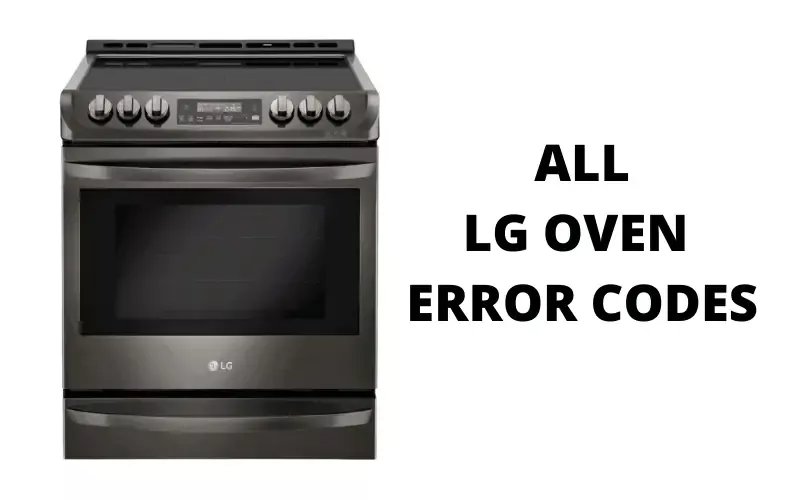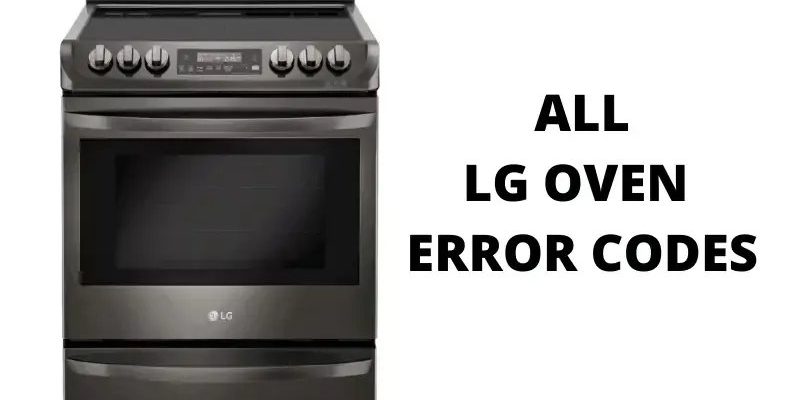
Now, you might be wondering, what exactly does the E3 error mean? Essentially, it’s a signal that something isn’t quite right with the oven’s temperature sensor, or the sensor might not be communicating properly with the control board. Imagine your oven as a team, with each part playing its role. If the temperature sensor isn’t doing its job, it’s like a player on the field not passing the ball when needed, causing the whole team’s performance to falter. Let’s dive deeper into understanding the causes and how you might tackle them effectively.
Understanding the Role of the Temperature Sensor
Before diving into the nitty-gritty of the E3 error, it’s helpful to know a bit about the temperature sensor’s role. Think of this sensor as your oven’s internal thermometer, constantly checking the climate to make sure everything is cooking at the correct heat level. It sends information back to the control board—kind of like a weather app for your phone showing you whether it’s sunny or cloudy.
When the sensor malfunctions or stops communicating with the control board, the oven can’t accurately maintain temperature. This miscommunication triggers the E3 error code. Picture trying to bake a cake without knowing the oven’s temperature; it might end up raw in the middle or burnt to a crisp. Without proper temperature readings, your oven is just as lost.
If you’re encountering this problem, a faulty sensor could be at the root. Sometimes, the sensor might have developed a fault or has become disconnected from the control board. It’s as if your oven is trying to call you but the phone line is down—nothing gets through.
Causes of Faulty Sensor Connections
Now, you might ask, why does the sensor lose connection or fail? It’s not unlike when your mobile phone drops a call—annoying, right? There are several potential reasons for this. One common cause is simple wear and tear. Over time, the wires connecting the sensor to the control board can become loose or frayed. It’s a bit like the wear on your favorite pair of shoes—they start to show their years after a lot of use.
Another culprit could be a sudden power surge. Your oven is like any other electronic device and can be prone to the effects of unexpected electricity spikes. Imagine how a thunderstorm can sometimes knock your home off the grid; this is similar but on a smaller scale.
Lastly, simple misalignment or dirt build-up can also lead to sensor issues. It’s like reading glasses getting smudged—you can see, but not clearly. Ensuring that the sensor is clean and securely positioned can sometimes be the quick fix you need.
Steps to Fix the Sensor Issue
So, what should you do if you suspect the sensor is behind the E3 error? First, make sure your oven is unplugged from the power source. Safety first, right? Then, locate the temperature sensor, usually found inside the oven at the back. It’s attached to the wall and looks like a thin metal rod.
Check for any obvious damage or disconnections in the wiring. Reconnect any loose wires, ensuring they’re firm yet gentle, much like securing a loose screw on your glasses. If the problem persists, replacing the sensor might be necessary. It’s akin to getting a new battery for your watch when it starts to lose time.
Remember, if you’re not comfortable around electronics or suspect a more complex issue, calling a professional technician is a wise move. They can provide an exact diagnosis and service, much like visiting a doctor when self-medication doesn’t do the trick.
Issues with the Control Board
Sometimes, the problem might not be the sensor itself but the oven’s control board. The control board is the brain of your oven. If it’s not working properly, even the best temperature sensor can’t function correctly. It’s like having a perfect car navigation system but with a broken GPS.
Malfunctions in the control board can arise due to moisture damage, like spilling water on a keyboard—it just doesn’t type the same. This might cause incorrect readings or fail to interpret the sensor’s signals accurately, triggering the E3 error.
In some cases, the control board may have suffered damage from previous power surges or simply aged, leading to faulty behavior. Reprogramming or resetting the control board can sometimes solve minor glitches, much like restarting a computer when it freezes.
Troubleshooting Tips for the Control Board
If you’re thinking of fixing the control board issue yourself, start by performing a reset. Unplug the oven for several minutes and then plug it back in. This action often resets any temporary glitches in an electronic device. Think of it as a quick nap for your oven to clear its ‘head.’
If resetting doesn’t do the trick, inspect the board for any visible signs of damage, such as burn marks or loose components. If you’re not comfortable identifying these, it’s best to call in the experts. Replacing a control board isn’t a light task, and it can be more complex than fitting a new piece into a puzzle.
Ultimately, if the control board is consistently problematic, professional replacement is often the most effective solution. While it may seem like a daunting task, preserving your oven’s functionality and safety is worthwhile, much like replacing a faulty brake on your car for peace of mind.
Maintaining Your LG Oven
Preventing issues is always better than fixing them, right? To keep E3 errors at bay, regular maintenance of your LG oven is key. Think of it like taking your car for regular servicing—small efforts can lead to long-term reliability and performance.
Begin with a routine cleaning schedule. Take care to clean both the interior and exterior of the oven regularly. It’s surprising how much dirt and grime can build up, affecting the sensor’s ability to function.
Next, inspect the oven’s wiring periodically. Just as you’d check your home’s electrical outlets, ensuring that your oven’s internal connections are secure can prevent future problems. If you notice any wear or damage, addressing it promptly can keep your oven running smoothly.
Finally, consider using a surge protector for your oven. Power surges can be silent but potentially damaging over time. A surge protector acts like a shield, much like a raincoat in a storm, safeguarding your oven from electrical spikes.
In conclusion, understanding the common causes of the E3 error and how to address them can transform what once seemed like a daunting task into a manageable one. With a little knowledge, a bit of effort, and the readiness to call in professional help when necessary, you’ll have your LG oven back to making culinary masterpieces in no time. Happy cooking!
